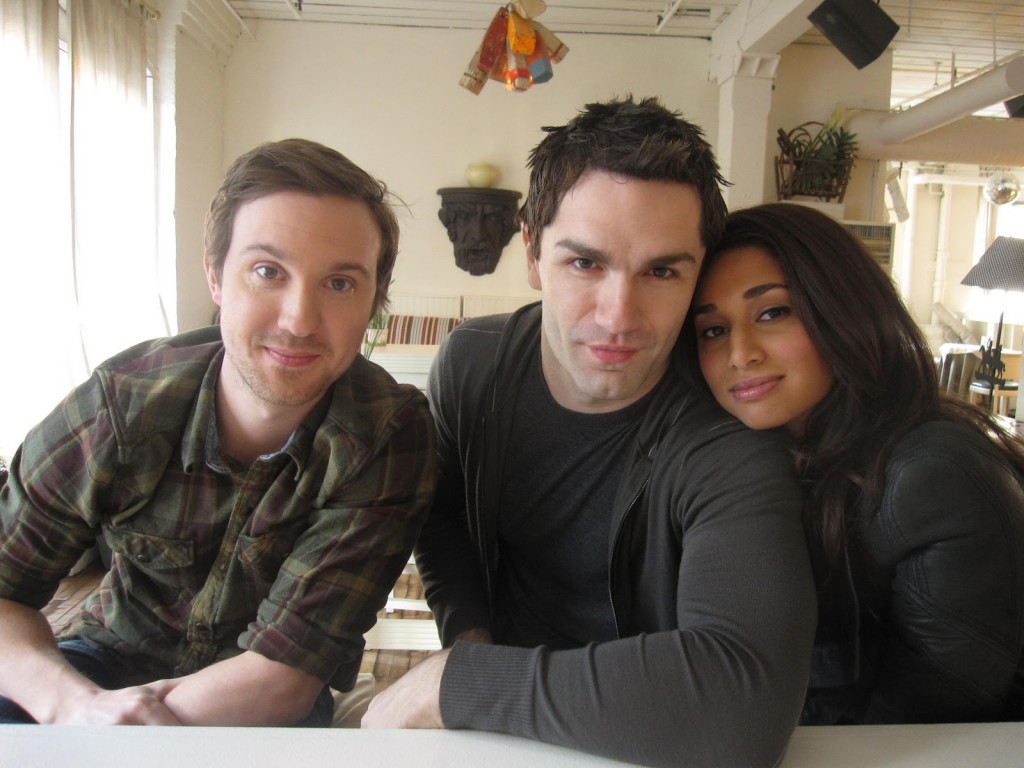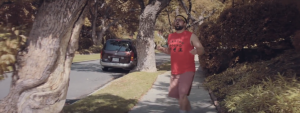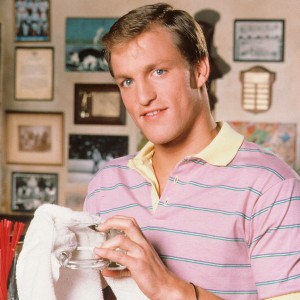 Everyone in the creative professions lives or dies by their ability to detect change, see new patterns, invent new things.
Everyone in the creative professions lives or dies by their ability to detect change, see new patterns, invent new things.
And in a world like this, I think it’s possible we are developing new cognitive abilities in a rapid cultural evolution.
There are several new cognitive styles in the works. But beneath them all is, I think, a brute feeling for order. Whatever we do for a living, we are increasingly interested in order as order.
Are you one of these people? Take this test and see!
I want you to answer four questions. Be honest. No cheating.
Question 1: Do you like order more than most people?
You will know this to be true if (and only if) you are captivated by certain combinations of numbers, images, sounds, words, shapes and colors while the rest of the world just carries on.
Do you take pleasure when the world “falls into place,” when “things make sense?” Some people experience a little buzz as if they have just been given a hit of a psychoactive drug. The nervous system hums for a moment. It feels like something has been illuminated, even when we can’t quite say what.
Question 2: Do you dislike disorder more than most people?
Do you find that commotion bugs you more than it does other people? It might just be a scratching sound or a piece of furniture that’s out of place. I’m not suggesting you want perfect symmetry or military precision. I don’t mean an obsessive or compulsive interest in order. You just don’t like noise in the signal.
If you answered “yes” to questions 1 and 2, congratulations, you qualify for membership in an emerging community of people who care about order for its own sake. Chances are you’re someone who makes his or her living engaging in the part of the economy that creates ideas and innovation. So it makes sense that you should care about orderly order. But it’s more than that. You care about order for the sake of order. For you, order isn’t just a means. It feels like an end in itself.
Some want to put this community on the autistic continuum and call you “Aspie” (aka someone with Asperger’s syndrome. See the excellent essay by Benjamin Wallace called “Are You On It?” in New York Magazine here). Others want to say your passion for order identifies you as having an Obsessive Compulsive Disorder. To be sure, it is entirely possible that there is one or more neurological factors at work here. But I don’t think that’s the whole story. I think it’s possible we are cultivating new cognitive styles and preferences. Some of us are orderists. Some of us have orderism.
But I’m getting ahead of myself. I have two more questions.
Question 3: Do you dislike order more than most people?
I know this sounds like I’m contradicting Question 1. But I’m not. I am granting that you like some kinds of order more than most people, but I am suggesting that there are certain kinds of order that really get on your nerves. As when things are too tidy, too neat, too perfect. You hate this order with a passion.
Other people couldn’t care less. They can “live with it.” But what you see is a world that’s too tidy. The pattern is too obvious. There’s no contest. It’s like watching genre TV. You can see the punch line coming. And it gets to you. You would like to just nudge this order ever so slightly, to put a little disorder in. Naturally, you don’t. Because, well, you don’t want to look like a kook. But tidy is often just too too.
Question 4: Do you like disorder more than most people?
Once again, no contradiction is intended because we are granting that you dislike most disorder. We are merely suggesting that there are certain kinds or moments of disorder you really like. Love, actually.
Again, this puts you out of step with the rest of the world. Let’s say something nutty happens. Everything comes pouring off a shelf. There is a moment of pandemonium at the office. The rest of the world is offended, perturbed, upset. You are thrilled. You are energized. Perhaps even liberated. You like it when the world is released from the rules.
Answer “yes” to all four and you are part of a new elite. You are part of a community that loves working with order, sometimes because it is so very orderly, sometimes because it is so very disorderly. Some people like Late Night Television. Some people like fishing. You like working with order. These “symptoms” aren’t signs of some physiological or mental disorder. You’re not an Aspie. You do not have OCD. You’re just engaging in a new kind of pattern seeking.
And here’s why.
Order is harder to come by. The world is filled with variety and commotion. If once we were a monolithic culture, we are now a heterogeneous one. We produce variety effortlessly. There are more groups, working in more media, from more and more various motives and objectives out there. And together, they make our culture a place of astounding variety. Don’t believe. Try having one conversation with your 15 year old that does not contain a long silence as you try to figure out what she means. Or drive around downtown and see if you can go more than 15 minutes before thinking, “what the hell is that.” Or just spend some time wandering around online. Or look at what is happening in the startup space. The world is boiling with variety.
And that means every organization lives in a wind tunnel. Every given moment is complicated and various. And any given moment is almost instantaneously replaced by a succession of moments that deliver still more variety. Things move so quickly Nokia missed a major shift. They move so fast Michael Raynor says strategy is dead. They change so fast a new challenger or challenge can come from anywhere.
This means there is a new premium on early detection, figuring out what’s out there in the world and how to respond to it. Our managerial window, always pretty broad, is now expanding as we peer around us looking for blue oceans and black swans. For organizations to survive, new abilities are called for. Early detection is everything. Advantage will go to people with a ferocious feeling even for the slightest traces of order.
That’s why you are interested in order for its own sake because this is the surest way of capturing order for instrumental purposes. We can’t tell what we need to notice. We just need to notice everything. An interest in every kind of order gives us first recognizance, first contact, first reckoning. At this point, we are not particular. Any order is better than no order. Even trace elements of order are interesting also because we are virtuosee, capable of working with the faintest signals.
So if you are order interested, order observant, even a little order obsessive, consider yourself lucky. You are cultivating an ability everyone is going to have to have to survive the world thats coming at us. And perhaps this is the place to say, let’s perhaps cease and desist on our Aspie obsession. Yes, there may very well be some neurological or physiological factor here. But while we are all claiming Aspieness, trying to stuff ourselves into a DSM category, we are missing the bigger picture, dare I say it, the bigger pattern.
Time to stop treating our interest in order like it’s a symptom of Asperger’s or Obsessive Compulsive Disorder, and see it for what it is. We are a society evolving at a ferocious pace and some of us have begun to adapt accordingly. It’s not about brain wiring. Its about how we see order, use order, order order. The world is changing. We’re adapting.
Thanks for the image to nicklilavois. See his website here.
Thanks to Pam DeCesare, my wife, for thinking of the term “orderist.”





























